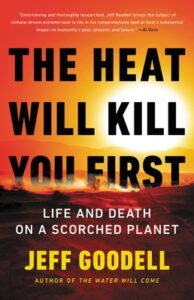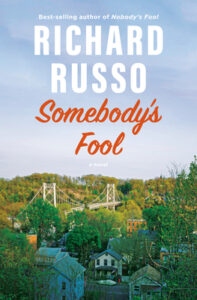As the summer sun shines brightly, the literary world is abuzz with the release of an array of captivating books in July 2023. From gripping thrillers to heartwarming romances and thought-provoking non-fiction, this month promises to be a treasure trove for book lovers. In this blog post, we’ll explore some of the most anticipated new book releases, offering a glimpse into the diverse worlds of literature awaiting us. Whether you’re an avid reader or just looking for a new literary adventure, July 2023 has something special in store for everyone.
T he Anniversary by Stephanie Bishop
he Anniversary by Stephanie Bishop
Novelist J.B. Blackwood is on a cruise with her husband, Patrick, to celebrate their wedding anniversary. Her former professor, film director, and cult figure, Patrick is much older than J.B.. When they met, he seemed somehow ageless, as all gods appear in the eyes of those who worship them. But now his success is starting to wane and J.B. is on the cusp of winning a major literary prize. Her art has been forever overseen by him, now it may overshadow his.
For days they sail in the sun, nothing but dark water all around them. Then a storm hits and Patrick falls from the ship. J.B. is left alone, as the search for what happened to Patrick – and the truth about their marriage – begins.
The Centre by Ayesha Manazir Siddiqi
Anisa Ellahi dreams of being a translator of ‘great works of literature’, but instead mostly spends her days subtitling Bollywood films in her flat in London while living off her parents’ generous allowance and discussing the ‘underside of life’ with her best friend, Naima. Then she meets Adam, who has successfully leveraged his savant-level aptitude for languages into an enviable career. At first, this only adds to her sense of inadequacy, but when Adam learns to speak Urdu with native fluency practically overnight, Anisa forces him to reveal his secret.
Adam tells Anisa about the Centre, an elite, invite-only program that guarantees absolute fluency in any language in just ten days. Sceptical but intrigued, Anisa enrols. Stripped of her belongings and all contact with the outside world, she undergoes the Centre’s strange and rigorous processes. But as she enmeshes herself further within the organisation, seduced by all that it’s made possible, she soon realizes the disturbing, hidden cost of its services.
 Crook Manifesto by Colson Whitehead
Crook Manifesto by Colson Whitehead
It’s 1971. Trash piles up on the streets, crime is at an all-time high, the city is careening towards bankruptcy, and a shooting war has broken out between the NYPD and the Black Liberation Army. Amidst this collective nervous breakdown furniture store owner and ex-fence Ray Carney tries to keep his head down and his business thriving. His days moving stolen goods around the city are over. It’s strictly the straight-and-narrow for him — until he needs Jackson 5 tickets for his daughter May and he decides to hit up his old police contact Munson, fixer extraordinaire. But Munson has his own favors to ask of Carney and staying out of the game gets a lot more complicated – and deadly.
1973. The counter-culture has created a new generation, the old ways are being overthrown, but there is one constant, Pepper, Carney’s endearingly violent partner in crime. It’s getting harder to put together a reliable crew for hijackings, heists, and assorted felonies, so Pepper takes on a side gig doing security on a Blaxploitation shoot in Harlem. He finds himself in a freaky world of Hollywood stars, up-and-coming comedians, and celebrity drug dealers, in addition to the usual cast of hustlers, mobsters, and hit men. These adversaries underestimate the seasoned crook – to their regret.
1976. Harlem is burning, block by block, while the whole country is gearing up for Bicentennial celebrations. Carney is trying to come up with a July 4th ad he can live with. (“Two Hundred Years of Getting Away with It!”), while his wife Elizabeth is campaigning for her childhood friend, the former assistant D.A and rising politician Alexander Oakes. When a fire severely injures one of Carney’s tenants, he enlists Pepper to look into who may be behind it. Our crooked duo have to battle their way through a crumbling metropolis run by the shady, the violent, and the utterly corrupted.
Counterweight by Djuna
On the fictional island of Patusan—and much to the ire of the Patusan natives—the Korean conglomerate LK is constructing an elevator into Earth’s orbit, gradually turning this one-time tropical resort town into a teeming travel hub: a gateway to and from our planet. Up in space, holding the elevator’s “spider cable” taut, is a mass of space junk known as the Counterweight. And it’s here that lies the key—a trove of personal data left by LK’s former CEO, of dire consequence to the company’s, and humanity’s, future.
Racing up the elevator to retrieve the data is a host of rival forces: Mac, the novel’s narrator and LK’s Chief of External Affairs, increasingly disillusioned with his employer; the everyman Choi Gangwu, unwittingly at the center of Mac’s investigations; the former CEO’s brilliant niece and his power-hungry son; and a violent officer from LK’s Security Division, Rex Tamaki—all caught in a labyrinth of fake identities, neuro-implant “Worms,” and old political grievances held by the Patusan Liberation Front, the army of island natives determined to protect their sovereignty.
 The Heat Will Kill You First: Life and Death on a Scorched Planet by Jeff Goodell
The Heat Will Kill You First: Life and Death on a Scorched Planet by Jeff Goodell
The world is waking up to a new wildfires are now seasonal in California, the Northeast is getting less and less snow each winter, and the ice sheets in the Arctic and Antarctica are melting fast. Heat is the first order threat that drives all other impacts of the climate crisis. And as the temperature rises, it is revealing fault lines in our governments, our politics, our economy, and our values. The basic science is not Stop burning fossil fuels tomorrow, and the global temperature will stop rising tomorrow. Stop burning fossil fuels in 50 years, and the temperature will keep rising for 50 years, making parts of our planet virtually uninhabitable. It’s up to us. The hotter it gets, the deeper and wider our fault lines will open.
The Heat Will Kill You First is about the extreme ways in which our planet is already changing. It is about why spring is coming a few weeks earlier and fall is coming a few weeks later and the impact that will have on everything from our food supply to disease outbreaks. It is about what will happen to our lives and our communities when typical summer days in Chicago or Boston go from 90° F to 110°F. A heatwave, Goodell explains, is a predatory event— one that culls out the most vulnerable people. But that is changing. As heatwaves become more intense and more common, they will become more democratic.
The Militia House by John Milas
It’s 2010, and the recently promoted Corporal Loyette and his unit are finishing up their deployment at a new base in Kajaki, Afghanistan. Their duties here are straightforward―loading and unloading cargo into and out of helicopters―and their days are a mix of boredom and dread. The Brits they’re replacing delight in telling them the history of the old barracks just off base, a Soviet-era militia house they claim is haunted, and Loyette and his men don’t need much convincing to make a clandestine trip outside the wire to explore it.
It’s a short, middle-of-the-day adventure, but the men experience a mounting agitation after their visit to the militia house. In the days that follow they try to forget about the strange, unsettling sights and sounds from the house, but things are increasingly . . . not right. Loyette becomes determined to ignore his and his marines’ growing unease, convinced that it’s just the strain of war playing tricks on them. But something about the militia house will not let them go.
Owner of a Lonely Hear by Beth Nguyen
At the end of the Vietnam War, when Beth Nguyen was eight months old, she and her father, sister, grandmother, and uncles fled Saigon for America. Beth’s mother stayed—or was left—behind, and they did not meet again until Beth was nineteen. Over the course of her adult life, she and her mother have spent less than twenty-four hours together.
 The Red Hotel by Alan Philps
The Red Hotel by Alan Philps
In 1941, when German armies were marching towards Moscow, Lenin’s body was moved from his tomb on Red Square and taken to Siberia. By1945, a victorious Stalin had turned a poor country into a victorious superpower. Over the course of those four years, Stalin, at Churchill’s insistence, accepted an Anglo-American press corps in Moscow to cover the Eastern Front. To turn these reporters into Kremlin mouthpieces, Stalin imposed the most draconian controls – unbending censorship, no visits to the battlefront, and a ban on contact with ordinary citizens.
The Red Hotel explores this gilded cage of the Metropol Hotel. They enjoyed lavish supplies of caviar and had their choice of young women to employ as translators and share their beds. On the surface, this regime served Stalin well: his plans to control Eastern Europe as a Sovietised ‘outer empire’ were never reported and the most outrageous Soviet lies went unchallenged.
But beneath the surface, the Metropol was roiling with intrigue. While some of the translators turned journalists into robotic conveyors of Kremlin propaganda, others were secret dissidents who whispered to reporters the reality of Soviet life and were punished with sentences in the Gulag. Using British archives and Soviet sources, the unique role of the women of the Metropol, both as consummate propagandists and secret dissenters, is told for the first time.
At the end of the war when Lenin returned to Red Square, the reporters went home, but the memory of Stalin’s ruthless control of the wartime narrative lived on in the Kremlin. From the weaponization of disinformation to the falsification of history, from the moving of borders to the neutralization of independent states, the story of the Metropol mirrors the struggles of our own modern era.
Silver Nitrate by Silvia Moreno-Garcia
Montserrat has always been overlooked. She’s a talented sound editor, but she’s left out of the boys’ club running the film industry in ’90s Mexico City. And she’s all but invisible to her best friend, Tristán, a charming if faded soap opera star, though she’s been in love with him since childhood.
Then Tristán discovers his new neighbor is the cult horror director Abel Urueta, and the legendary auteur claims he can change their lives—even if his tale of a Nazi occultist imbuing magic into highly volatile silver nitrate stock sounds like sheer fantasy. The magic film was never finished, which is why, Urueta swears, his career vanished overnight. He is cursed.
Now the director wants Montserrat and Tristán to help him shoot the missing scene and lift the curse . . . but Montserrat soon notices a dark presence following her, and Tristán begins seeing the ghost of his ex-girlfriend.
As they work together to unravel the mystery of the film and the obscure occultist who once roamed their city, Montserrat and Tristán may find that sorcerers and magic are not only the stuff of movies.
 Somebody’s Fool by Richard Russo
Somebody’s Fool by Richard Russo
Ten years after the death of the magnetic Donald “Sully” Sullivan, the town of North Bath is going through a major transition as it is annexed by its much wealthier neighbor, Schuyler Springs. Peter, Sully’s son, is still grappling with his father’s tremendous legacy as well as his relationship to his own son, Thomas, wondering if he has been all that different a father than Sully was to him.
Meanwhile, the towns’ newly consolidated police department falls into the hands of Charice Bond, after the resignation of Doug Raymer, the former North Bath police chief and Charice’s ex-lover. When a decomposing body turns up in the abandoned hotel situated between the two towns, Charice and Raymer are drawn together again and forced to address their complicated attraction to one another. Across town, Ruth, Sully’s married ex-lover, and her daughter Janey struggle to understand Janey’s daughter, Tina, and her growing obsession with Peter’s other son, Will. Amidst the turmoil, the town’s residents speculate on the identity of the unidentified body, and wonder who among their number could have disappeared unnoticed.
Small Worlds by Caleb Azumah Nelson
The one thing that can solve Stephen’s problems is dancing. Dancing at Church, with his parents and brother, the shimmer of Black hands raised in praise; he might have lost his faith, but he does believe in rhythm. Dancing with his friends, somewhere in a basement with the drums about to drop, while the DJ spins garage cuts. Dancing with his band, making music which speaks not just to the hardships of their lives, but the joys too. Dancing with his best friend Adeline, two-stepping around the living room, crooning and grooving, so close their heads might touch. Dancing alone, at home, to his father’s records, uncovering parts of a man he has never truly known.
Stephen has only ever known himself in song. But what becomes of him when the music fades? When his father begins to speak of shame and sacrifice, when his home is no longer his own? How will he find space for himself: a place where he can feel beautiful, a place he might feel free?
 Thunderclap: A Memoir of Art and Life and Sudden Death by Laura Cumming
Thunderclap: A Memoir of Art and Life and Sudden Death by Laura Cumming
As a brilliant art critic and historian, Laura Cumming has explored the importance of art in life and can give us a perspective on the time and place in which the artist worked. Now, through the lens of one dramatic event in 17th century Holland, Cumming illuminates one of the most celebrated periods in art history.
In 1654, an enormous explosion at a gunpowder store devasted the city of Delft, killing hundreds of people and injuring thousands more. Among those killed was the extraordinary painter Carel Fabritius, renowned for his paintings The Goldfinch and his haunting masterpiece A View of Delft , which depicts the very streets through which the victims would be carried to their graves. Fabritius’s contemporary and rival Vermeer, painter of the iconic portrait Girl with a Pearl Earring , narrowly escaped death.
Framing the story around Fabritius’s life, Cumming deftly weaves a sequence of observations about paintings and how they relate to everyday life. Like Dutch art itself, the story gradually links country, city, town, street, house, interior—all the way to the bird on its perch, the blue and white tile, the smallest seed in a loaf of bread. The impact of a painting and how it can enter our thoughts, influence our views, and understanding of the world is the heart of this book and Cumming has brought her unique eye to her most compelling subject yet.


 he Anniversary by Stephanie Bishop
he Anniversary by Stephanie Bishop Crook Manifesto by Colson Whitehead
Crook Manifesto by Colson Whitehead The Heat Will Kill You First: Life and Death on a Scorched Planet by Jeff Goodell
The Heat Will Kill You First: Life and Death on a Scorched Planet by Jeff Goodell The Red Hotel by Alan Philps
The Red Hotel by Alan Philps Somebody’s Fool by Richard Russo
Somebody’s Fool by Richard Russo Thunderclap: A Memoir of Art and Life and Sudden Death by Laura Cumming
Thunderclap: A Memoir of Art and Life and Sudden Death by Laura Cumming